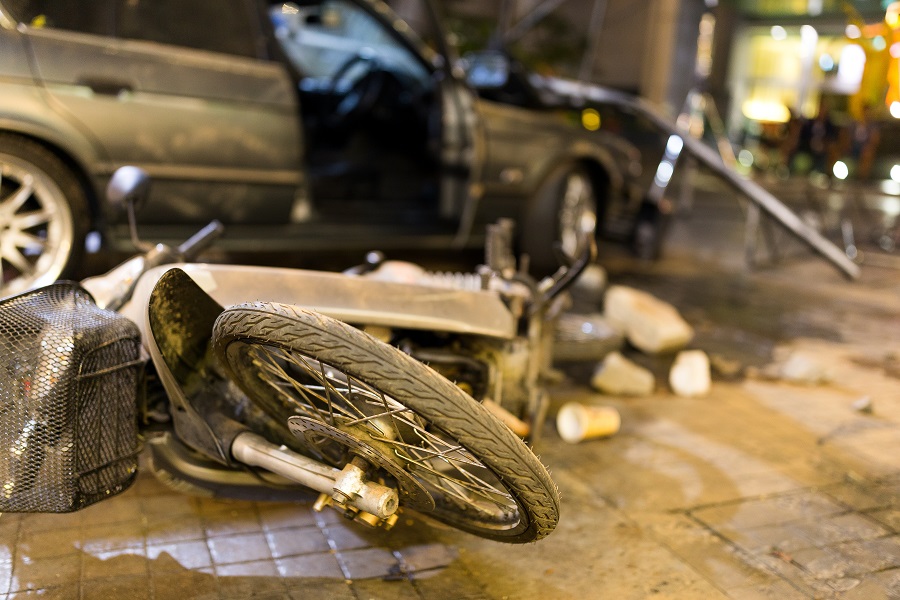Find out why these fve letters are important when dealing with a serious accident
Recent statistics from Vietnam’s National Traffic Safety Committee show that road crashes kill almost one person every hour in this country. More than 9000 traffic accidents occurred in the first half of 2019 alone, killing nearly 4100 people and injuring more than 7000. Foreigners in Vietnam are involved in 500 accidents every year. Most of these crashes involve motorbikes.
With so many bike accidents in Saigon, trauma management is an extremely important part of emergency ambulance response. First responders generally follow two key strategies: “Stay and Play” and “Scoop and Run”. What happens at the scene of an incident always depends on the situation and condition of the victims.
The standard of care for ambulance medicine internationally is to bring patients to the hospital setting in the best possible condition. When the situation allows, ambulance teams will do the most they can to relieve emergency departments, ranging from preliminary diagnostic measures to determine a provisional diagnosis to stabilizing and initiating treatment to prevent the patient from deteriorating. This requires proper medical equipment on board, as well as a certain know-how on the part of the ambulance team. That all falls under the “Stay and Play” category.
“Scoop and Run” is where the situation requires the ambulance to pick up the casualty and then take them to a medical facility as quickly and safely as possible, where a more complete diagnostic can proceed. In that case, we don’t want to have the emergency medical team remain on site for too long. In Vietnam, “Scoop and Run” is the normal ambulance response strategy, partly because the role of paramedics is not recognised in local law.
This means that for ambulance teams, a fast and efficient rescue protocol plays a very important role. In trauma management, the algorithm we use is called ABCDE. It stands for Airway (check the patient’s airway for patency), Breathing (check if the patient is breathing sufficiently), Circulation (check that the patient’s blood pressure and heart rate are maintained), Disability (check if the patient has sustained any immobilizing injuries) and Exposure (thorough physical examination of the patient to detect less obvious injuries).
This systematic approach is used everywhere in the world. It’s a symptombased method ensuring that whatever might kill a patient first is treated first. For example, a casualty doesn’t have much time to live if their airway is obstructed, impairing breathing, so that problem must be treated before anything else—and if the patient is bleeding from a major artery and the bleeding isn’t stopped by putting pressure on the wound, the patient will very likely die.
After completing ABCDE and achieving a stable condition of the patient, the next priority is pain management for patient comfort. Broken bones should be splinted and immobilized to prevent further damage, and open wounds dressed to prevent further infection.
An important and relatively recent change to the ABCDE protocol is that C-spine (neck) trauma has been prioritized further, so a trauma team will check the C-spine simultaneous to looking at breathing, circulation, and so on. The reason is that if an accident is serious, head trauma is usually involved—and this is especially dangerous in Vietnam, where few people wear proper helmets. Bystanders at an accident are usually unaware how serious damage to the C-spine can be, and it is often overlooked by improperly trained medical personnel. People who see a victim lying unconscious on the ground who has just been in a motorbike accident tend to drag them to the side of the road. That isn’t necessarily lifethreatening if the victim has a broken leg, but if someone has a broken C-spine and is dragged, it can be fatal. Whenever our ambulance team suspects a C-spine injury, they will manually immobilize or apply a stiff-neck collar around the patient’s neck immediately to protect it.
In cases of severe and major trauma, every minute counts. It’s critical for all members of an emergency medical operation to be trained in the ABCDE method to ensure that to ensure that everyone follows the same protocol— therefore aligning their priorities in the management of trauma victims. This is true of our medical operation in Saigon, where everyone is trained in this method—from the doctors and nurses to the emergency responders in the ambulances.
We also have fantastic resources both on board the vehicles and in our medical centers. I can say with confidence that our ambulances are the best in the country, fully equipped with mobile Intensive Care Unit technology. At our clinic, we have a state-of-theart CT scanner for precise imaging; an on-site laboratory to perform blood and other specimen testing with the fastest possible turnaround; and in case referral to another hospital is required, the ambulance is right there to transport them immediately.
I’ve heard about a lot of trauma cases here where people are brought to a local hospital and had to wait to even be seen, despite the fact that time is crucial in trauma emergencies. It’s not that they’re not a priority, but that these facilities are overcrowded—there can be as many as three patients to a bed, and naturally staff can be overwhelmed by the volume of patients.
When trauma patients come to our medical center, I have seen first hand that they receive priority treatment. All of our emergency doctors are trained in the ABCDE protocol to assess the urgency and risk to the patient. By following the protocols and with the resources we have at hand, we can complete diagnostics and initiate definitive medical treatment time efficiently.
If someone gets into a motor vehicle accident and a bystander calls *9999, the ambulance can be dispatched within minutes—depending on the severity of the emergency, and guided by the same global-standard ProQA protocols that are used by 911 in the US. Our ambulance team—consisting of an ambulance driver, at least one nurse and one doctor—will perform an initial assessment on site (a quick ABCDE) and transport the patient quickly and safely to the nearest appropriate hospital, if needed—and is capable of providing lifesaving emergency treatment en route. When the patient is handed over to our emergency doctor at FMP, their condition will be re-assessed following ABCDE (in case it has changed)— followed by a full diagnostic workup (for example, laboratory testing, ultrasound, X-rays or CT scan to objectify the severity of injuries).
Once all the tests and checks are complete, a doctor will have a full appraisal of the situation and will know if a particular treatment or surgery is necessary, if the patient should be kept under observation for several hours or can be sent home. Until that moment, trauma management is all about assessment and treatment of the most urgent symptoms in order of greatest risk to the life of the patient.




